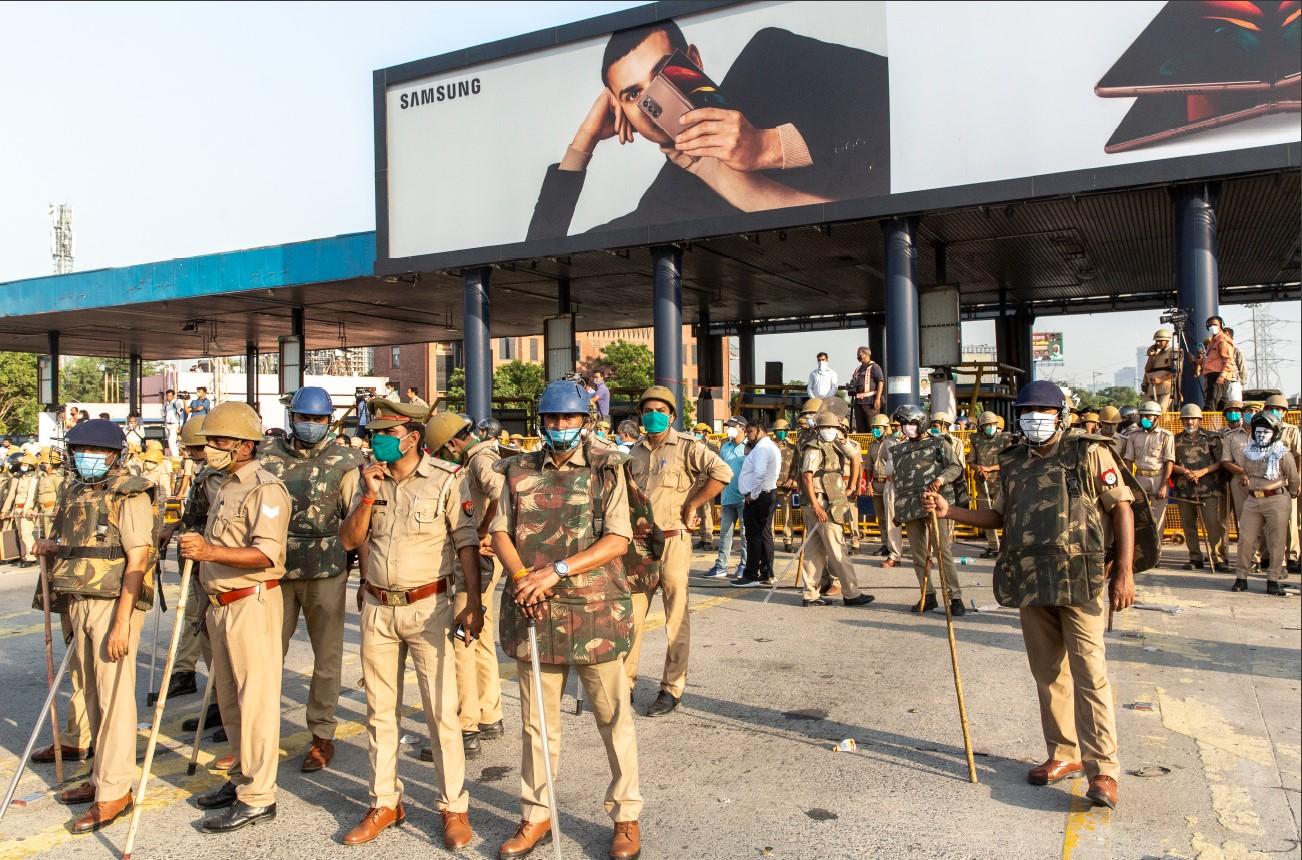Imagistic Traces from the Pandemic: still, life by Ishan Tankha
Ishan Tankha recently exhibited a triadic set of zines titled still, life at this year’s edition of Pulp Society’s Paper & Play. The zine collection follows an ambulatory trail, primarily across Delhi and its outskirts, taking the onset of the COVID-19 pandemic in 2020 as its focal point. It reveals an apocalyptic landscape marred with bandaged feet, twisted ceiling fans, ransacked stocks of fruits and incinerated vehicles, among other scenes evidencing a period when the city’s socio-economic rot had burst out on the surface. News coverage of migrant workers’ enforced departure following the nationwide lockdown and the anti-Muslim pogrom that took place a month before is replete with predictable photojournalistic tropes of crisis. But Tankha, though not undoing such tropes, scaffolds his images with a fragmented narrative to work out a critically incisive yet felt account of the time.
Box with zines.
The text card accompanying the zines begins with a first-person recollection of Tankha stepping out of his gated society amid the lockdown to visit a nearby market. It informs us how, after making his way around what he ironically calls the “virus-proof metal gates” of the Resident Welfare Association, Tankha witnessed thousands of workers leaving for home on foot with their belongings. “It was the Partition but in 8K,” he writes, referencing Margaret Bourke-White’s photographs of the time. This encounter led him to chase discrete moments in the city over the next few months, even as visuals of police brutality against the anti-Citizenship (Amendment) Act (CAA) protestors kept haunting him. The text then not only serves as an adhesive to assemble the photographs captured in the months preceding and following the lockdown but also clarifies the socially embodied position of the photographer. It implicitly acknowledges the privilege underpinning Tankha’s itinerant gaze and relative security amid the unfolding crisis.

DND Toll Booth, New Delhi, 3.10.2020. From still, life 1.
Tankha abstains from putting an enveloping claim around the images and often arranges them in a paratactic relationship with each other. Though this creates a playful movement across the pages, the arrangement also risks slipping into an unsurprising continuity. In the first zine, for instance, one photograph shows a contingent of masked police personnel guarding a toll booth in Delhi to restrict the movement of migrant workers travelling homeward. The following image is of a mouse hunted down by a crow, bluntly symbolising predatory behavior. It leads to another photograph of three men carrying similar backpacks with “killer” written on them, then comes another image of a person wrapped in a Personal Protective Equipment (PPE) kit inside a cemetery, and, hence, a corresponding formation concatenates.

Chand Bag, New Delhi, 2.2.2020. From still, life 1.
However, the chain of imagistic correlations is periodically interrupted by photographs that variably repeat and relapse across the three zines. Other patterns like the typological depiction of twisted fan blades—wreaked by the perpetrators of the 2020 pogrom in Delhi—or semiotically similar images bracketing the opening and closing pages of the zines bring dynamicity to the work. To a considerable extent, Tankha’s curatorial schema seems manifestly self-indulgent and absorbed in his associative conjectures. What appears to be missing here is a sense of participatory voice from the photographed subjects in the constitution of the work’s visual semantics.
Box and poster with captions.
On the other hand, the medium of the zine provides mobility to the reception of the images while complicating Tankha’s journalistic bent. He professes to be a “magazine photographer” by instinct, despite the magazine industry’s steady decline of interest in documentary photo series since he started working professionally. Tankha sought a cheaper and more accessible way of presenting the images he made between 2019 and 2023, so zines became his inevitable way out. still, life was brought to fruition through the group show All Together Now, a self-funded initiative, programmed to present diverse media works and practices by contemporary artists. The show, where Tankha first released this work, ended last month at the India International Centre, New Delhi.
Tankha has, as of writing this piece, reached out to nineteen different open-access library networks across the country to sell the zines at a discounted price and diversify the viewership pool. While many photojournalists in India turned to social media platforms during the pandemic to develop a new modus operandi for community building and storytelling, Tankha’s project provides us with a case to reflect on the media ecology of zines in the post-pandemic landscape, in other words, to reflect on the possibilities the medium holds in the methodological revision of photojournalism. As is also evident in the text of the work, what, for Tankha, started as “chasing the moment” and capturing everything around him ends up eventually in a maze of provocative questions: “Has the city always been a maze of colony gates? Did the roads come with ‘attached’ barricades? Were students always suspect?” and so on. Of course, still, life does not alienate the photographs from a social and historical understanding of the pandemic but opens new routes for processing the imagistic traces of the period.
The three zines.
To learn more about Ishan Tankha’s practice, read Ketaki Varma’s two-part conversation with the artist.
Images courtesy of Ishan Tankha.




